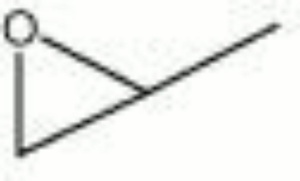Difference between revisions of "Propylene oxide"
Jump to navigation
Jump to search
(username removed) |
m (Text replace - "== Authority ==" to "== Sources Checked for Data in Record ==") |
||
| Line 40: | Line 40: | ||
LINK: [http://www.cdc.gov/niosh/ipcsneng/neng0192.html International Chemical Safety Card] | LINK: [http://www.cdc.gov/niosh/ipcsneng/neng0192.html International Chemical Safety Card] | ||
| − | == | + | == Sources Checked for Data in Record == |
* ''The Merck Index'', Susan Budavari (ed.), Merck Research Labs, Whitehouse Station, NJ, 12th Edition, 1996 Comment: entry 8041 | * ''The Merck Index'', Susan Budavari (ed.), Merck Research Labs, Whitehouse Station, NJ, 12th Edition, 1996 Comment: entry 8041 | ||
Revision as of 14:15, 1 May 2016
Description
A colorless, flammable liquid with an ether-like odor. Propylene oxide is used to make propylene glycol and urethane foams. It is also used as a fumigant, biocide, and solvent.
Synonyms and Related Terms
1,2-epoxypropane; methyloxirane; methyl ethylene oxide; propene oxide
Other Properties
Degrades to for propylene glycol in the presence of water.
| Composition | C3H6O |
|---|---|
| CAS | 75-56-9 |
| Melting Point | -112.13 |
| Density | 0.859 |
| Molecular Weight | mol. wt. = 58.08 |
| Boiling Point | 34.23 |
Hazards and Safety
Highly flammable. Strong oxidizer. Flash point - -35C Contact causes burns. Potential carcinogen.
LINK: International Chemical Safety Card
Sources Checked for Data in Record
- The Merck Index, Susan Budavari (ed.), Merck Research Labs, Whitehouse Station, NJ, 12th Edition, 1996 Comment: entry 8041
- Richard S. Lewis, Hawley's Condensed Chemical Dictionary, Van Nostrand Reinhold, New York, 10th ed., 1993
